#west korea
Text
I was tagging that last post and Tumblr's tag suggester tried to correct "#we know the devil" to "#west korea". Either my knowledge of geopolitics is even worse than I thought, or the algorithm is trying to draw me into political discourse from parallel universes.
1K notes
·
View notes
Text



Green Party of Korea in solidarity with Palestine ❤️
Also, the sheer cognitive dissonance in Israel is just so wild to me because Korea was under a brutal, violent, and oppressive occupation for decades under Japanese rule in the early to mid-twentieth century. If some of you were unaware of this, there are plenty of resources available (I have read journal articles and have watched some documentaries, and have bear witness/watched content where survivors talk about the sexual violence they experienced from Japanese military officials before and during World War 2). My point is, the reason why there's SO much solidarity among communities of people all around the world for Palestine is precisely because their ancestors, to their relatives and close family members/loved one's have experienced violent settler-colonial occupations and imperial violence. It's just baffling and disgusting to me how Israel, with the US government supporting them, get to feel so untouchable and superior... despicable.
#feminist#feminism#israel is an apartheid state#palestine#freepalastine🇵🇸#social justice#free gaza#free palestine#israel is committing genocide#south korea#israel is a terrorist state#israeli propaganda#israeli apartheid#free west bank#ceasefire now
556 notes
·
View notes
Text
The thing is, the Western superpowers NEED the people divided. Division leads war, displacement, economic collapse, forced assimilation— repercussions that generate income for the overarching hegemony. Division is their backbone. This is why any act of unity in history has been retroactively distorted to brainwash us into thinking there is no alternative to Capitalism. The United States attempted to physically divide Vietnam in the US attempted- intervention on Vietnam, and successfully divided Korea shortly after the nation’s liberation from brutal Japanese occupation.
You can read about the ongoing Korean War here, and see a timeline here.
North Korea has been systematically demonised for being one of the few successful modern Socialist states; for the crime of liberation. They are a demonstration of what anti-Capitalism looks like, and yet we are barred from witnessing that with our own eyes. The Western propaganda machine works at maximum capacity to ensure the masses are deluded into believing North Korea is an evil, oppressive regime, a corrupt government that abuses and oppresses its people— whilst homelessness is at an all time high in the United States and Western nations, with an extortionate cost of living, inaccessible health care and rampant medical negligence, Not to mention, police brutality, Neo-Nazism (like, Western-funded Ukraine’s historic complicity with Nazism) anti-Trans laws that lead to murders of Trans people, and the Western Israeli Regime’s support in multiple genocides across the globe (Mayan, Tamil, Rwanda and of course, Palestine). Not to mention, North Korea has had unwavering support for Palestine
The West has been lying to us for years about China, North Korea, Cuba, Vietnam, Palestine, Iran and so many more nations to mask their deadly Imperial ambitions, money-hungry forceful acquisition of oil and resources, and further imposition of globalised White Supremacy. We, the people, suffer at the hands of our very nations that copiously delude us into thinking there’s no way out, there’s no alternative, there’s no hope.
We implore you learn more about North Korea, and will be adding more resources to our Drive, linked in our link tree. Here’s some more resources on Korea:
Nodutdol 노둣돌 is an excellent pro-Palestinian organisation of diasporic Koreans organising for a world free of Imperialism, and for the reunification of Korea. Check out their page, and website, to keep up to date on their events, organising and get more information on what the West try to hide.
We also recommend this excellent documentary:
youtube
#korea#north korea#western propaganda#anti imperialism#anti capitalism#anti west#free palestine#palestine#jumblr#israel#resources#north korea has never been the enemy#korean unification now#Youtube#dprk
314 notes
·
View notes
Text


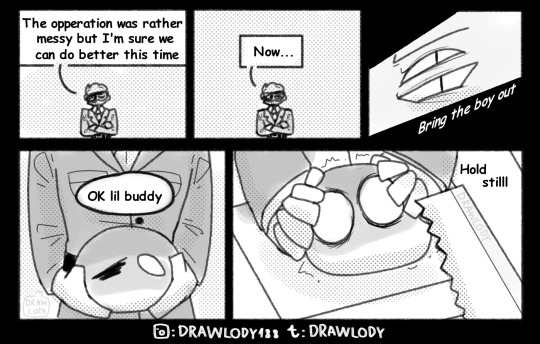

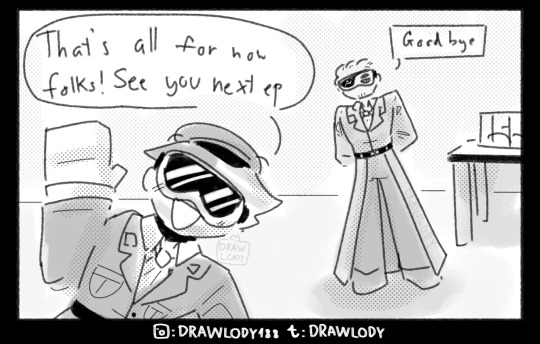

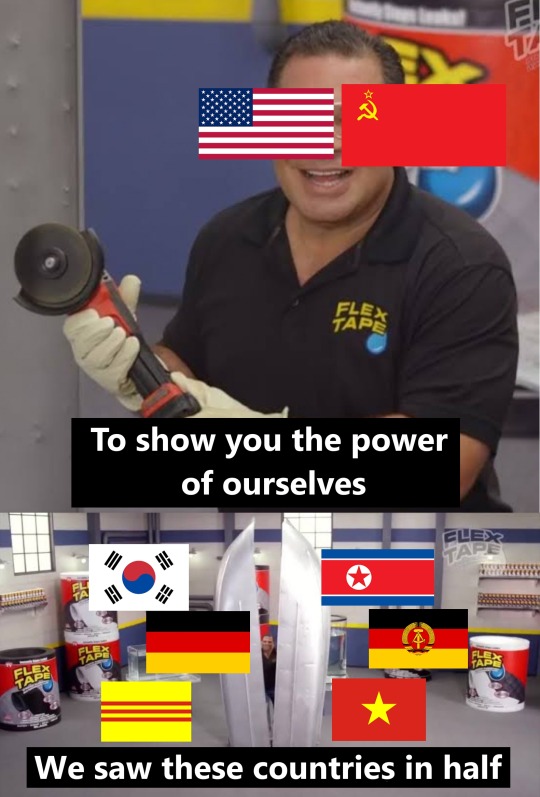
#you can see i change style midway lmao#like i realized if i dont try connect every lines its much faster#art#artists on tumblr#countryhumans#comic#digital drawing#countryhumans ussr#countryhumans soviet union#countryhumans america#countryhumans usa#countryhumans vietnam#countryhumans south vietnam#digital art#countryhumans south korea#shitpost#countryhumans north korea#countryhumans germany#countryhumans east germany#countryhumans west germany
314 notes
·
View notes
Text

#threads#threads app#current events#social justice#human rights#important#west bank#middle east#palestine#palestine 🇵🇸#north korea#dprk#gaza strip#gaza#china#russia#ussr#soviet union#free palestine#free gaza#gaza genocide#gazaunderattack#media bias#it was never about hamas#gazaunderfire#stand with gaza#save gaza#israel is a terrorist state#freepalastine🇵🇸#iran
95 notes
·
View notes
Text
We are lucky to be alive in the age of Andrew Scott, an actor of extraordinary breadth, skill and sensitivity, who can terrify as Jim Moriarty in Sherlock, make us fall in love (inappropriately) as the hot priest in Fleabag and cry in All of Us Strangers. He can also astonish, last year playing eight parts in a stage adaptation of Chekhov’s Uncle Vanya. He recently became the first actor to win the UK Critics’ Circle awards for best actor on stage and screen in the same year. And his latest project, Ripley, is a beautiful and chilling adaptation of the Patricia Highsmith novel The Talented Mr Ripley, with Scott playing the lead, dominating all eight one-hour episodes. It’s been a wild, crowning year for the 47-year-old Irish actor. But in March his mother, Nora, died of a sudden illness; she is who Scott has credited as being his foremost creative inspiration. His grief is fresh and intense and for the first half of the interview it seems to swim just beneath the surface of our conversation.
“We go through so many different types of emotional weather all the time,” he says. “And even on the saddest day of your life you might be hungry or have a laugh. Life just continues.” We are in a meeting room in his management company’s offices, talking about his ability, in his work, to modulate between emotions, to go from happy to sad, confused to scared, all within a matter of seconds. How does he do it? Scott laughs. “I would say that I have quite a scrutable face — is scrutable a word? — which is good or bad depending on what you are trying to achieve. But my job is to be as truthful as possible in the way that we are, and I don’t think that human beings are just one thing at any particular time. It is rare that we have one pure emotion.”
It’s an approach that is particularly appropriate for the playing of Tom Ripley, an acquisitive chameleon who inveigles his way into the lives of others (in this case Johnny Flynn, as the careless and wealthy Dickie Greenleaf, and his on-off girlfriend Marge, played by Dakota Fanning). “Ripley is witty, he is very talented. That’s gripping, to watch talent. I can’t call him evil — it is very easy to call people who do terrible things evil monsters, but they are not monsters, they are humans who do terrible things. Part of what she [Highsmith] is talking about is that if you dismiss a certain faction of society it has repercussions, and Ripley is someone who is completely unseen, he lives literally among the rats, and then there are these people who are gorgeous and not particularly talented and have the world at their feet but are not able to see the beauty that he can see.”
The show was written and directed by Steven Zaillian, the screenwriter of Schindler’s List. It’s set in Sixties New York and Italy, and filmed entirely in black-and-white, its chiaroscuro aesthetic evoking films of the Sixties — particularly those of Federico Fellini — while also offering an alternative to Anthony Minghella’s saturated late-Nineties iteration that starred Matt Damon and Jude Law. This has a darker flavour. “I found it challenging,” Scott says, “in the sense that he’s a solitary figure and ideologically we are very different. So you have to remove your judgment and try to find something that is vulnerable.”
It was a tough shoot, taking a year and filmed during lockdown. Scott was exhausted at the end of it and had intended to take a three-month break, but delays meant that he went straight from Ripley into All of Us Strangers. “Even though I was genuinely exhausted, it was energising because I was back in London, I was getting the Tube to work, there was sunshine,” he says. “I found it incredibly heartful, that film, there were so many different versions of love … I feel that all stories are love stories.”
All of Us Strangers, directed by Andrew Haigh, is about a screenwriter examining memories of his parents who died when he was 12. In it Scott’s character, Adam, returns to his family home, where his parents are still alive and as they were back in the Eighties. Adam is able to walk into the memory and to come out to his parents, finding the words that were unavailable to him as a boy. Some of it was filmed in Haigh’s childhood home, and there was a strong biographical element for him and his lead. Homosexuality was illegal in the Republic of Ireland until 1993, when Scott was 16. He did not come out to his parents until he was in his early twenties. I ask if he was working with his own childhood experiences in the film. “Of course, so in a sense it was painful, to a degree, but it was cathartic because you are doing it with people that you absolutely love and trust. I felt that it was going to be of use to people and I was right, it has been. The reaction to the movie has been genuinely extraordinary — it makes people feel and see things, and that isn’t an easy thing to achieve.”
The film is also a tender and erotic love story between Scott’s character and Harry, played by the Irish actor Paul Mescal. The two found a real-life kinship that made them a delight to watch on screen and off it, as a double act on the awards circuit. “I adore Paul, he’s so, so … continues to be …” Scott pauses. “Obviously it’s been a tough time recently and he just continues to be a wonderful friend. It’s everything. The more I work in the industry, I realise, you make some stuff that people love and you make some stuff that people don’t like, and all really that you are left with is the relationships that you make. I love him dearly.”
Scott and Mescal were also both notable on the red carpet for being extraordinarily well dressed. Scott loves fashion and has a big, well-organised wardrobe that he admits is in need of a cull. “I don’t like having too much stuff. I really believe that everything we have is borrowed — our stuff, our houses, we are borrowing it for a time. So I am trying to think of people who are the same size as me so I can give some of it away, and that���s a great thing to be able to do.” One of his favourite labels is Simone Rocha. “I love a bit of Simone Rocha. What a kind, glorious person she is. I just went to her show.” Fashion, he says, is in his DNA. “My mother was an art teacher, she was obsessed with all sorts of design. She loved jewellery and jewellery design. Anything that is visual, tactile, painting, drawing, is a big passion of mine, so I have tremendous respect for the creativity of designers.”
Today Scott is wearing Louis Vuitton trousers and a cropped Prada jacket, dressed up because he is collecting his Critics’ Circle award for best stage actor for Vanya. I ask how it feels to have won the double, a historic achievement. “Ah …” he says, looking at the table, going silent, having just been so voluble. “I’m sorry …” His voice cracks a little. “It’s bittersweet.”
At the ceremony Scott dedicated the award to his mother, saying of her “she was the source of practically every joyful thing in my life”. Is it difficult for him to carry on working in the circumstances, I wonder. “Well, you know, you have to — life goes on, you manage it day by day. It’s very recent, but I certainly can say that so much of it is surprising and unique, and there is so much that I will be able to speak about at some point.”
He is looking forward, he says, once promotion for Ripley is over, to taking some time off, going on holiday, going back to Ireland for a bit. He has homes in London and Dublin. To relax he walks his dog, a Boston terrier, dressed down in jeans and a hoodie “like a 12-year-old, skulking around the city” or goes to art galleries on the South Bank — he was considering a career as an artist until he was 17 and got a part in the Irish film Korea. He goes to the gym every day, “not, you know, to get …” he says, flexing his biceps. “More that it’s good for the head.” He is social, likes friends, likes a party. When I ask if he gave up drinking while doing Vanya, which required him to be on stage, alone, every night for almost two hours, he looks horrified. “Oh God, no! Easy tiger! Jesus … Although I didn’t drink much, I did have to look after myself. But we had a room downstairs in the theatre, a little buzzy bar, because otherwise I wouldn’t see anybody, so I was delighted to have people come down.”
Scott was formerly in a relationship with the screenwriter and playwright Stephen Beresford and is currently single, although this is not the sort of thing he likes to talk about. He is protective of his privacy, not wanting to reveal where he lives in London, or indeed the name of his dog — but he swerves such questions with a gentle good humour.
He is famous on set for being friendly and welcoming, for looking after other people. “The product is very important, but most of my time is spent in the process, so I want that to be as pleasant and kind as possible. I feel like it is possible to do that, that it is an honourable goal.” He is comfortable around people, with an easy charm — no one I have interviewed before has said my name so many times. And although when we talk he sometimes seems reflective or so very sad, there are also moments when he is exuberant, silly, putting on accents. “I feel like, as a person, I am quite near my emotions. I cry easily and I laugh easily, and there is nothing more pleasurable to me than laughing.”
Scott was raised a Catholic and is no longer practising, but says his view about religion is “ever changing — I definitely have a faith in things that cannot be proved”. When he was younger and felt overwhelmed, just before or after an audition, he would go to the Quaker Meeting House in central London and sit in silence, something that made its way into the second series of Fleabag, in which Scott’s priest takes Waller-Bridge’s character to that same meeting house. “It’s just around here,” he says, standing up, looking out of the window at Charing Cross Road. “When Phoebe and I first talked, we met at the Soho Theatre. We talked about love and religion, we walked all around here. And I said, ‘This is a place I go,’ so we called in and there was no one there, so we sat in there and we talked. It was a really magical day.”
Scott says he sees all the different characters that he has played as versions of himself. “It’s like, ‘What would this version of me look like?’ rather than, ‘Oh, I’m going to be somebody else.’ You filter it through you, and you discover more about yourself. I think that is a very lucky thing to be able to do, to find out more about yourself in the short time that we are here.”
#Andrew Scott#Ripley#Nora Scott#Critics Circle#Vanya#Chekhov#West End#All of Us Strangers#Paul Mescal#Hot Priest#Fleabag#Phoebe Waller-Bridge#Jim Moriarty#Sherlock#Patricia Highsmith#The Talented Mr Ripley#Dickie Greenleaf#Marge Sherwood#Dakota Fanning#Johnny Flynn#Steven Zaillian#Matt Damon#Jude Law#Anthony Minghella#Simone Rocha#Louis Vuitton#Andrew Haigh#Korea#Stephen Beresford
69 notes
·
View notes
Text
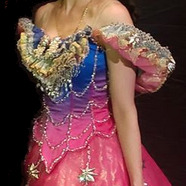
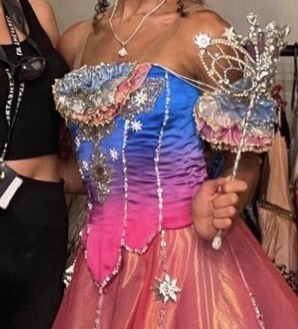







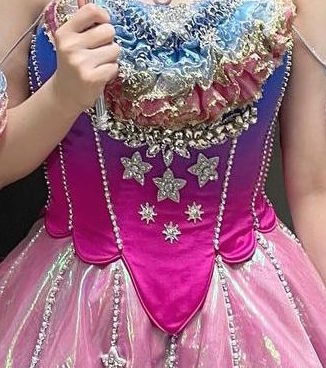
IF THEY WOULD, THEY COULD!
To the left, recent UK made Star Princess bodices worn in the UK and in Asia. To the right, new UK made bodices, also worn in the UK and Asia.
ROW 1: Claire Lyon in the World Tour revival, and Lucy St Louis in the West End revival
ROW 2: Pan Hangwei in Beijing, and Lucy St Louis in the West End revival
ROW 3: Lucy St Louis in the filmed West End fitting, and Son Eun Hye in the Seoul revival
ROW 4: Holly-Anne Hull in the UK Tour revival and early West End revival, and Lily Kerhoas, West End revival
ROW 5: Claire Lyon in the World Tour revival, and Kown Ga Min in the Seoul revival
I am not shaming the individual wearers. They are beautiful and talented and put on the assigned costume. I am also not shaming the individual costume makers. They make what they are asked to make. Chances are some of these bodices were even made by the same costume makers. I am shaming the decision of going from what reflects on Maria Bjørnson's rich design, to stripped-down, half-assed bodices which sometimes doesn't even seem to be properly fitted to the actress.
OK, so the general audience may not notice. But for example in photos it is quite visible. You can do better. The column to the left is a proof you both CAN and HAVE done better. As it is now some fan replicas looks a lot better than the stage equivalent. I'm not sure that's what you want. Just... up the game goddamnit!
#star princess#last rant for a while i promise#i'm just so annoyed#phantom of the opera#poto west end revival#poto south korea#poto china#poto world tour revival#cotume nerding#maria bjørnson
55 notes
·
View notes
Text
@morbidlizard replied to your post “Can I ask, why do you love BL romance better than...”:
I mean it's unfortunate but asian BL is just hands down better than western for so many reasons <: /
I've been reading asian BL for literal decades now (AHHH) and I can maybe count on one hand the western series I've enjoyed that had some sort of queer romance that had all I wanted or at least a part of the tropes I like...And even then, it's usually F/F relationships 9_9 (and when I say asian, I mean japanese, korean, chinese, some indonesian too! etc etc...)
Actually yeah this is also really where it's at
I think a lot about how we're still getting extremely like... milquetoast wholesome queer narratives (most of the time) in western m/m romance media (I have nothing against Heartstopper, but it's extremely 'all queer people are pure wholesome need-to-be-protected jellybeans' and like, cool, but I want more than that as well - like give me 20 shows that are 'all queer people' in 20 different genres, thanks. BL will give me that - BL will pay people to give me that.
The only way I can get that from western media is fanfiction, and sometimes - kind of - from published m/m, when it's not paint-by-numbers rapid release that isn't about telling stories from the heart and it's about telling stories from the bank account instead (which is a valid reason to write, it's just not what I'm looking for as a reader - most readers who end up loving and writing fanfiction aren't looking for this imho)).
Thomas Baudinette is actually doing incredible work in this area of Media Studies, where it's literally a known thing that BL - particularly in countries like Korea, Thailand and Taiwan - is actually taking huge strides ahead in the genre, comparatively, especially when up against western BL.
It almost feels like we're on a giant lag, buffering behind them, and about the only place we aren't is in fanfiction, which makes sense, because the cross-pollination between fandom and south-east Asian BL is incredible (literally, they got omegaverse and guide-verse from western fanfiction and western fandom, and imho are doing a lot more with it for money than we are, see: Pit Babe).
I've been reading up pretty heavily into Baudinette's work, and also a lot of the recent and up-to-date work in BL Studies (a thing), and like, it's just kind of fascinating the different interrogations of BL we have going on in different cultures and subcultures, and how different senses of place and culture and ethnicity and minority and belonging can influence our tales, along with many different manifestations of capitalisation, economy, influence etc.
And that isn't to say there aren't huge problematic areas for BL in all countries, not just western, I can critique western BL so easily because I am western, and it's been really interesting reading critiques of BL from academics who live within other countries from their perspectives too. But I do think if I want really great BL romances, turning to fanfiction and then turning to other cultures and what they're doing is often the first thing I do. I just don't have to search as hard to find what I'm looking for. And like, I'm lazy, lol, I don't want to search through 100 published works to find like 1-5 stories I might reread but not over my favourite manhwa or like fanfiction or whatever.
This has been my area of like... personal study for a few months now (literally reading Regimes of Desire: Young Gay Men, Media and Masculinity in Tokyo by Baudinette atm) and I have a lot of thoughts of which this is just a very generalised ramble and not actually anything of great meaning but like sadkljfas TL;DR yeah
#morbidlizard#idk how to categorise this but#pia on media studies#i do think it's really incredible that we get Pit Babe in part because#western fanfiction exists#what korea and thailand and other countries are doing with omegaverse#i just think hollywood and indie movie studios in the west are fucking cowards#run largely by puritanical evangelistic supremacists#and that other countries are seeing that actually omegaverse could spin them a LOT of money#in the mass media#already#absolutely wild
43 notes
·
View notes
Text
Firewatch (March 2024 edition, Part 2)
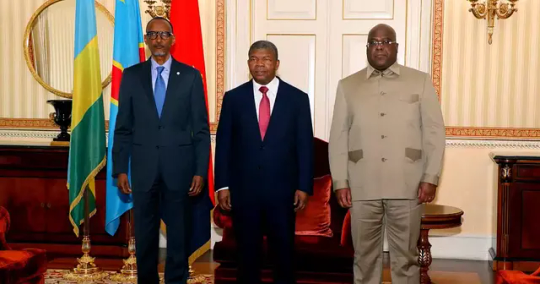
(This is Part 2 of my innagural edition of "Firewatch" becuase I was dumb and didn't realize what the character limit is. Read Part 1 here).
Full piece beneath the cut.
Smoldering Embers
These are the conflicts that, while not yet to the point where the flames are rising and heating up, smoke is starting to billow (or has been billowing) and there's potential for a real blaze to suddenly flare up at a moment's notice. You may have heard about them in the news here and there, but they're likely only popping up for your attention once in a blue moon because they haven't gotten bad or dramatic enough yet to fully grab the world's attention amid everything else going on.
West Africa/Sahel
The Sahel regions of West Africa are no stranger to crisis and conflict. Multiple countries in the region have already been dealing with internal political discord and armed conflict for years, but now multiple factors and various players seem to be converging in this part of Africa, positioning it to take a number of different paths forward in the coming months and years – few of which look very good.
West Africa and the Sahel are feeling a series of different pressures converging all at once. Since 2020, the region has seen a historic number of coup d'etats – both failed attempts and successful ones – which often come with a large amount of public support amid frustration with institutions and leaders that appear to be failing them. One reason for this frustration (among others that should be unsurprising, like economic troubles) is increasing amounts of instability throughout the region. Affiliates of both Al-Qaeda and the Islamic State both have footholds in the region, and are engaged in insurgencies against the governments of Mali (its most recent coup being in 2021, and also fighting a simultaneous insurgency by Tuareg separatists), Burkina Faso (most recent coup in 2022), and Niger (most recent coup in 2023), with Nigeria also dealing with a well over-decade old insurgency against Bokho Haram.
Niger's coup last year, in particular, seems to have been a watershed moment for the region and beyond. The country was strategically important both for its mineral resources (which unsurprisingly have not translated into economic and social development for the people of Niger themselves) and as a geographically well positioned outpost both for France (who's colonial legacy hangs heavily over the region) and the Untied States and other foreign powers, who all had troops stationed in the country to conduct counter-terrorism operations. The coup was seen as serious enough that the Economic Community of West African States (ECOWAS) issued an ultimatum to the Nigerien junta this past summer, threatening that if it did not cede power back to the elected President that ECOWAS would intervene to restore the legitimately elected government (as it has in the past).
Ultimately, the ECOWAS threats have not come to fruition and don't seem likely to – despite some apparent moves to do so in the aftermath of the coup. But out of those threats, Niger has joined into a new political and military alliance called the Alliance of Sahel States with both Burkina Faso and Mali (all of which had been suspended from ECOWAS due to their respective coups) to provide for collective self-defense against foreign intervention. Since 2023, French troops have been forced out of both Burkina Faso and Niger – with Niger now seemingly on the verge of doing the same to the remaining US troops in the country, while Vladimir Putin's Russia has seemingly been on a charm offensive to befriend the members of new alliance signing economic and military agreements and even reportedly dispatching troops – with mercenaries such as those from Wagner already having been active in the area (now operating under the new name of the "Africa Corps").
All these factors and more combined suggest that things in the Sahel are liable to get very interesting in the near future. As stated before, a number of different paths seem to unfold ahead for the region: if the ongoing radical insurgencies continue and are victorious, we could see a new territorial caliphate in West Africa and the Sahel mirroring that of IS in Iraq and Syria in the 2010s (and all the horrors that came with it). Barring that, as Russia deepens its ties to the AES, it could further turn the region into even more of a battleground in the multilateral Cold War we find ourselves in (as Russia is not the only authoritarian power seeking to deepen its influence in West Africa, as Turkey under Recep Tayyip Erdogan is also attempting to get involved there). Those are only two potential options out of many, and the myriad of other options in a region that is heavily populated and on the radar of multiple great powers means that it bears continued monitoring going forward.
The Democratic Republic of the Congo/Rwanda
Now this is one that I imagine is probably flying under the radars of most people who aren't deeper into my field, but is probably one of the most immediately pressing in Africa. The Democratic Republic of the Congo has been fighting against a rebellion by the armed group known as "M23" in its East for a decade now – that much isn't new. But now the conflict is threatening to turn onto a state-on-state war in Africa's Great Lakes region, as M23's primary back of neighboring Rwanda seemingly steps up its direct involvement into the conflict.
Rwanda has been backing M23 for some time now, with both Rwanda's government (under long-time President Paul Kagame) and M23 itself being primarily led by members of the Tutsi ethnic group. Rwanda also has a history of armed interventions in the DRC as well, so that in itself is not new. But in recent months the long-running tensions and low-level conflict between the DRC and Rwanda has threatened to boil over into outright, full-scale war, amid a series of fresh escalations – one prominent example being Rwanda firing on a DRC fighter-jet that it claimed violated its airspace. The high level of tensions has been further evidenced by more direct US involvement recently than is typically seen in this part of the world, with the United States and other governments attempting to broker some kind of peaceful resolution between the DRC and Rwanda. These efforts do not seem to have made much headway, with this past month the United States resorting to publicly urging both the DRC and Rwanda to "walk back from the brink of war." US mediation efforts may well be undermined, however, by it's (and many other Western countries') cozy relationship with Rwanda – despite its autocratic leader.
The trajectory for the current crisis remains unclear. A sideline meeting during the African Union summit in the Ethiopian capital of Addis Ababa appeared to make some progress in at least getting both the DRC and Rwanda to sit at one table and discuss a return to a peaceful dialogue to resolve their differences. However, that same day, the DRC accused Rwanda of having launched a drone attack in the city of Goma – a key objective of M23's advances, seemingly pouring cold war on the idea of constructive and peaceful reconciliation for the time being. Most recently, the DRC appears to be acquiring drones of its own, with China reportedly set to supply the DRC with nine CH-4 armed drones (apropos of nothing, China has also supplied a fair amount of military hardware to Rwanda in recent years, as well as military training).
With little other news available on the crisis since February (with other global events taking precedence), it remains unclear where things with the DRC and Rwanda go from here. There have been reports that the DRC and Rwandan leaders may be preparing to meet face-to-face once more, through mediation by Angola. At the same time, little seems to have changed with the personalities at play. DRC President Felix Tshisekedi was recently re-elected (under conditions labeled a "farce" by the DRC opposition), and has previously taken a hard line on the crisis, threatening to "march on Kigali" if re-elected and the issues with Rwanda persist. The DRC's acquisition of drones from China seems to reinforce that it has no plans of backing down in its confrontation with M23 and Rwanda, even if Tshisekedi doesn't follow through on his more bellicose threats. Meanwhile in Rwanda, Kagame announced his intent to seek a fourth term as President – amid criticism for lifting term limits in order to stay in office longer (criticisms that he has made clear he cares very little for if at all), and so has an impetus to maintain his own hard-line on issues with the DRC.
A further ticking clock has been added to the DRC-Rwanda situation by the fact that the United Nations mission in the Congo – which has been assisting the DRC fight against rebels (including M23) for almost two decades – will now be leaving the DRC by the end of 2024 at the request of the DRC government, stating that the force had not been able to resolve the war with M23. This comes after the DRC government also ordered troops from the East African Community (EAC) that had been present in the country as well to leave in late 2023 – for the same reasons it ordered the UN force to leave. While the DRC may well be right that neither force has helped it to beat M23, the withdrawal of these troops may very well shift the entire balance of the conflict and not necessarily in a way that the DRC wants. The South African Development Community (SADC), led by South Africa itself, is seeking to fill the gap left by the UN and EAC, but it remains to be seen how quickly they can do so and if they can change facts on the ground any more than the UN or EAC could. Once again, we see a number of potential factors on a collision course, and while cooler heads may still prevail, we see the prospect of yet another major war in the heart of Africa's Great Lakes regions that could have significant impacts for the people of the region, the continent, and the world. It is definitely worth keeping an eye on this developing situation (to the extent you can even find news on it).
Ethiopia
Ethiopia, like Myanmar, is a country that has shown up in the past when I've done a round-up on pertinent conflicts in the world. However, unlike with Myanmar, I'm afraid I can't report that things are getting better in Ethiopia's case or that there's much cause for hope at this point. In fact, things seem to be getting actively worse.
The last time I substantively talked about Ethiopia, the government of Prime Minister Abiy Ahmed was engaged in a war in the Tigray region against the Tigray People's Liberation Force – even allying with his former long-time adversary of Eritrea to do so in a war that threatened to rip the country apart while engaging in brutal authoritarian actions that I'm sure are making the Nobel Committee really regret giving him that prize in retrospect. After a seesawing of the fortunes of war back and forth for both sides, the conflict was seemingly brought to a close by the signing of a peace agreement between the TPLF and the Ethiopian federal government. All's well that ends well, done and dusted, right?
Well, actually: no.
Just less than a year after the Tigray War ended, Abiy apparently tripped over his dick into a new internal conflict in mid 2023, this time with Amhara people and forces in the eponymous Amhara region (Ethiopia's second most populous) rather than Tigray. The spark for this conflict was apparently born out of the haphazard way in which Abiy ended the previous one. One of Abiy's key allies in the Tigray War were militias and security forces from the region of Amhara, including an influential armed group known as the "Fano." However, the peace deal that Abiy struck with Tigray did not sit well with many Amahara people, who felt betrayed by the deal due to Tigray claims on their territory (as well as the fact that the Ethiopian federal military and security forces had been unable to prevent the TPLF from occupying Amahara territory during the war). This rift was only made worse by crackdowns by Abiy's government against the Fano, coupled with a plan to absorb Ethiopia's regional security forces into Ethiopia's federal military and security forces, which was not received well among the Amhara. These tensions and more came to a head from April through August 2023, with the result being Abiy's government facing down a fresh and ongoing revolt that doesn't appear to be ending soon.
The result of this bridge burning by Abiy has been a growing war in Amhara occurring under the umbrella of an ever prolonged state of emergency in Amhara that gives Ethiopian authorities broad powers to carry out arrests, impose curfews, and ban public gatherings. This is a continuation of the Abiy's playbook of gross human rights violations from the previous war in Tigray, with accusations being leveled against his government of arbitrary arrests, extrajudicial executions, and indiscriminate killings – including indiscriminate drone strikes against targets such as schools and public transit stations (apropos of nothing, once more, Abiy has acquired his fleet of armed drones from Iran, Turkey, and China – as well as purchasing new fighter jets from Russia). If you're wondering why you haven't heard more about all this, its because Abiy has made heavy handed use of another favorite tactic of his from the previous war (and that it has even used against Amhara in the past), which is information and specifically internet blackouts, which make it very difficult to get information out of Amahara as the conflict drags on (as it did in Tigray during that war).
Abiy's uncanny knack for burning bridges and making enemies isn't limited to within his own country, but has made tensions rise throughout East Africa. At the start of 2024, Abiy signed an agreement with the breakaway region of Somaliland in Somalia, which reportedly gives Ethiopia a naval port on Somaliland's coastline in exchange for recognizing the region's independence from Somalia (something that no other UN member state does). All of this appears to be part of Abiy's quest to regain Ethiopian access to the sea (lost after Eritrea became independent), which has included efforts to re-establish the Ethiopian Navy. The reaction to this deal has been, unsurprisingly, poorly received in Somalia, with Somali President Hassan Sheikh Mohamud even threatening the possibility of war if Ethiopia follows through with it and accusing Ethiopia of outright trying to annex part of Somalia. Somalis are not the only ones unease about Ethiopia's quest for access to the Red Sea, with other East African states such as Djibouti, Eritrea, and Kenya all having previously voiced concern about Ethiopian actions.
There's also the matter of Ethiopia's previously mentioned issues with Egypt over the Nile River, in particular Ethiopia's construction of a massive hydroelectric dam known as the Grand Ethiopian Renaissance Dam (or "GERD") on the river that Egypt worries could have a devastating effect on its water supply downstream if Ethiopia acts without considering Egyptian concerns. Despite numerous efforts to come to an agreement over the dam and the river, every attempt thus far has ended in failure, with Egypt continuing to refer to GERD an "existential threat." Egypt has also made it clear that it stands squarely with Somalia regarding the sea access debacle, with Egypt's autocratic President Abdel Fattah el-Sisi asserting that "Egypt will not allow anyone to threaten Somalia or affect its security," creating a fresh avenue for tension between Egypt and Ethiopia in addition to the GERD issue. This is all in addition to concerns that both Egypt and Ethiopia could be drawn into the aforementioned civil war in Sudan, with numerous potential negative consequences for all involved.
The long and short of things when it comes to Ethiopia, is you have no shortage of opportunities for more intense conflict in the near future, both within and around the country. Abiy's continued heavy handed approach to both domestic and foreign politics creates an ever increasing possibility that one day he will bite off more than he can chew, and potentially spark a conflict of such scale and scope that it could engulf all of East Africa in a major war and potentially even destroy Ethiopia – the second most populous country in Africa – as a polity. Given the potential consequences, this is a part of the world meriting very close observation going forward.
"Do You Smell Something Burning?"
In this final section, I want to touch briefly (as I've already gone on for a few thousand words) on some hot spots in the world that are cause for concern and have been for a while, but have nothing major going on at this moment in time. While they may be quiet (at least relatively speaking, compared to everything else we've just talked about), they have the potential to spark up in the mid to long term and become a problem once again.
The Korean Peninsula
By this point, we're probably all used to North Korea (under its dictator, Kim Jong-Un) shooting off missiles and making bellicose statements. That's par for the course for them. But in recent months, Kim and his government's rhetoric have taken a new and more hostile turn. North Korea has stated it has abandoned the idea of peaceful unification with the South, instead naming it North Korea's "principal enemy" which it will "annihilate" if it is provoked. This comes as North Korea continues weapons tests and conducts multiple military drills – with Kim often in attendance.
While I wouldn't worry about a continuation of the (yet unresolved) Korean War just yet, this may well be cause for concern. While tensions are typical on the Peninsula, we haven't seen rhetoric like this from the North in quite some time. And while full-scale war may be unlikely at this moment (though not impossible), 010 showed us that under the right conditions, the Peninsula is never far from violent skirmishes and incidents between the two Koreas, such as the shelling of Yeonpyeong Island and sinking of the South Korean Navy corvette Cheonan. While wider conflict was avoiding in those cases, now that South Korea has a more reactionary President wanting to present a hard line towards the North, it raises questions about it may react to provocation. Again, while I wouldn't be panicking just yet, it may be worth keeping your ear to the ground on this one to keep from being caught unawares if tensions suddenly spike further.
Armenia and Azerbaijan
Well, they finally did it. I've also written about this conflict several times now, and it looks like by all accounts, Azerbaijan has gotten exactly what it said it wanted. After the world stood by and did largely nothing in its 2020 war against the ethnic-Armenian enclave of Artsakh (AKA: Nagorno-Karabakh), Azerbaijan decided to finish the job once and for all with a fresh offensive on the heels of a nine-month blockade this past year. With next to no prospect of outside assistance, and weakened by the blockade, the Artsakh forces quickly folded, and almost the entirety of the ethnic Armenia population promptly fled in the ensuing days and weeks to avoid violence at the hand of Azeri forces, leaving Azerbaijan free to complete its cultural genocide of the region. But now that its over, surely Armenia and Azerbaijan can find a way to live in peace with this new reality? Right?
Ha ha, no.
In what should be surprising to absolutely no one, Azerbaijan has celebrated getting what it wanted in Artsakh by shifting the goal post once more. Now its new demand is a land corridor connecting it to its ethnic exclave of Naxcivan on the opposite side of Armenia – referred to as the "Zangezur Corridor" (after the Azeri name for the Armenian Syunik province that it would pass through). Armenia seems highly unlikely to agree to such a demand, which it views as an unacceptable infringement on its sovereignty, which likely means – as has been the case after every war fought between these two countries in the past – a new war is almost certainly on the horizon as Azerbaijan will not stop until an outside force compels it to stop and will use the Armenian rejection as an excuse for fresh conflict. 2024 has already seen fresh skirmishes on the border between the two countries, showing that the tensions remain very much present.
It's not clear when this new war will occur, but we can only hope that in the interim more nations step up to actually assist Armenia. We have seen hopeful signs of greater support from other countries, with France and India selling arms to the country to help it defend itself. However, I can't take any of that for granted, with how the world has left Armenia out to dry time and time again. If Azerbaijan does decide to go to war for a land corridor, it also risks potentially sparking a wider regional war, as Iran has called such an action to cut off its land border with Armenia a "red line" (though whether or not it would really take military action in response remains unclear). Anyway, keep your ears to the ground on this one, because like with the other wars Azerbaijan has launched it'll likely come out of the blue.
I'm Very Tired.
I've just thrown a lot of information at you, so I'm going to try and keep this conclusion short and sweet (for me). First, I'll lay out a few takeaways about the wider world situation, and then some general closing thoughts.
Looking at the general state of things with the conflicts I've laid out, I'm going to infer a few things about the general state of global security. For one, Africa is in a dire state in multiple regards and seems to be the biggest place to watch for trouble on the horizon at the moment, as it has several crises that seem ready to boil over into major wars in the near future – if they haven't already in some cases. These crises and conflicts have the potential to pit some of the most populous countries on the continent against one another, and also to rip some of those same countries apart internally. Short of that, Africa is also seemingly getting teed up to be the sight of a new round of intense great power competition for influence and resources the likes of which we haven't seen since the Cold War, with said competition not just involving big players like the United States, Russia, or China, but attracting newcomers to the influence game too – as the UAE's involvement in Sudan's civil war has shown. Finally, it's also worth noting that now that we're in a post-Russian invasion of Ukraine world where large scale state-on-state conflict is back on the menu after many "experts" thinking it was dead and gone, it makes some of the fault lines we're watching here even more important to keep a close eye on.
There's almost certainly more that I say here, but these are just some big overarching themes to take away from this round of observation. Now, for the closing thoughts:
I know you're tired. We all are. I am.
That being said, we can't give up in our fight for a better world for everyone living in it. That requires remaining well informed (to the extent that you're able) about what's going on in that world. This is especially true if your government is playing a role in it (for good or for bad), or it isn't and it should be. Information is, in its own right, power.
I know that your emotional energy is precious, and likely being eaten up but a number of different things at any given moment. I'm not ask you to drop everything and devote all your time and energy to these causes or others, nor am I trying to shame you for not paying as close attention to them as I or others have. Simply, to add them to the Rolodex of your brain as something that matters and that you should check in on once in a while so you're not caught unawares when new developments occur that may affect you and others.
There's only so much that all of us can do about any one issue, either at home or abroad. But we do what we can, and in order to do that, we need to have an idea of what's going on. So take that as you will after reading all this (or anything else that I write or post, for that matter).
On that note, I'll let you get back to whatever else you need to do. But thank you for taking the time to read this and potentially learn more about events you may not have known much about and their potential impacts. I'll hopefully see you again for my next essay, but in the meantime: stay safe out there and don't give up.
Photo credit: africanews/AFP.
#War Takes#War Takes essay#War Takes Firewatch#West Africa#Sahel#Niger#Burkina Faso#Mali#Democratic Republic of the Congo#Rwanda#Ethiopia#Armenia#Azerbaijan#South Korea#North Korea#war#international relations#foreign policy#defense#security
21 notes
·
View notes
Note
Have the Boleyn tabs been changed to loops with green inside for all costumes?


Photos @isaacgrinnellphoto on Instagram
Yes! That started with the Boleyn redesign for Broadway in 2020 (what I call the 3.0 costume). It's been used for practically all new Boleyn costumes ever since:
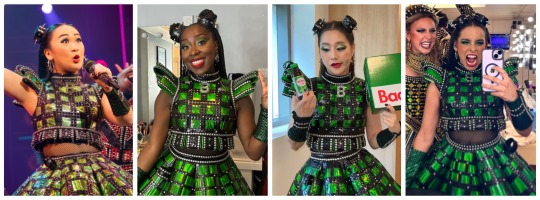
(Joan Marcus, naomialade1, b__shannon__b, _animalise)
Above examples are Andrea Macasaet (2020 Broadway), Naomi Alade (2023-25 West End), 배수정 (Pae Su-jeong, 2023 South Korea), and Analise Rios (Breakaway 6.0).
All current costumes have the looped tabs and green lining. However, in some prior costumes there’s been a few exceptions:

(aisforashleee, paiged_perc, James D Morgan)
L’Oréal Roaché and Ashlee Waldbauer (Bliss 3.0) both had the 3.0 looped tabs but it didn’t appear to have the green backing.
Kala Gare (2021-23 Australian Tour) has been in an earlier production and re-used her 2.0-style costume, which had the 2.0 flat tabs rather than the 3.0 looped tabs. They added some studs to her flat tabs to mimic the 3.0 design changes, but didn’t actually replace them with looped.
Also, thank you for including the photo credit in your ask. Always appreciated.
#six the musical#six costumes#anne boleyn six#boleyn 2.0#boleyn 3.0#six west end#six broadway#six ncl#six south korea#andrea macasaet#naomi alade#배수정#analise rios#l’oreal roache#ashlee waldbauer#kala gare#six breakaway 6.0#six bliss 3.0#six australia
40 notes
·
View notes
Note
Japan shaves just about everything. He doesn't think more hair=more manly. He infact has a whole different idea of what is manly compared to western countries or most countries in general. He also likes flowers and floral patterns.

everything?!
#ask#anon#hetalia#hws japan#sorry anon! live your truth but i can’t see it 😅 i know you probably meant like… his face/body but#like i agree he wouldn’t think more hair = more manly but… honestly#I don’t really see him deviating much from japanese masculinity. personally#east asian men don’t really shave their whole bod tbh (thats MENA men - wrong orient)#like i think foreigners get the wrong impression because we’re kind of less hair-ful in general than a lot of ppl. particularily white ppl#but its not really done… if anything japan is the most likely to leave facial hair haha considering how its more acceptable in japan#than in china or korea#of course#my view of japan is biased as a fellow easian#I was a little wary to depict the full extent of your ask (sorry anon) and thats bc#of how easian masculinity in general is problematized and fetishized in the west?#like the idea of ~smooth japan kind of speaks to the whole wawah hairless babyface femme easians~~ trope that is so common#and it brings me pause when it comes to japan because tbh japan is probably the east asian country with masculinity that is#historically speaking#the most ‘coherant’ to the west#<- again Im speaking as another easian so i recognize my bias but#anyways sorry about that! ik this likely isnt what u were expecting 🙇♂️
18 notes
·
View notes
Text

It is your voice that is likely to reach people who have not considered what Palestinian occupation really means.
And realistically, it is your solidarity that can help shift public opinion in the west.
Please watch Born in Gaza on netflix or motaz_azaiza on instagram 🙏🏼
#kanye west#palestine#tel aviv#ukraine#russia#halloween#trending#cnn#news live#japan photos#south korea#kbeauty#kim kardashian#kyle jenner#free gaza#i stand with israel#pierse morgan#pray for israel#mountain music#winter is coming#falafel#human rights#blackrock
29 notes
·
View notes
Text
(손)지수[Sohn Ji-soo] & (이)지수[Lee Ji-soo]💛
손지수 made her musical debut as Christine and 이지수 " as Cosette(Yep, both are young soprano roles in the Mackintosh musicals).


이지수 also sang POTO number on a TV program before her musical debut.
+ 조하린[Cho/Jo Ha-rin] Meg & 이지수
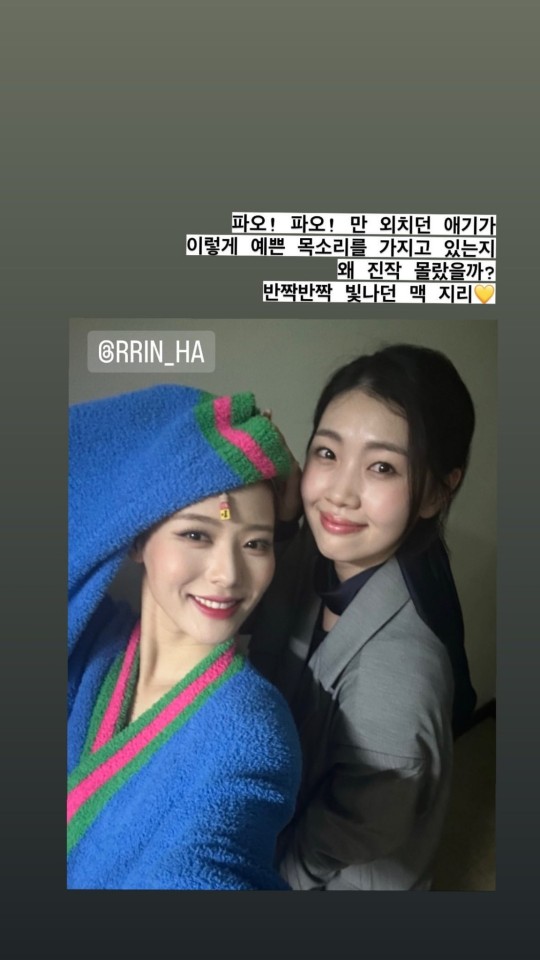
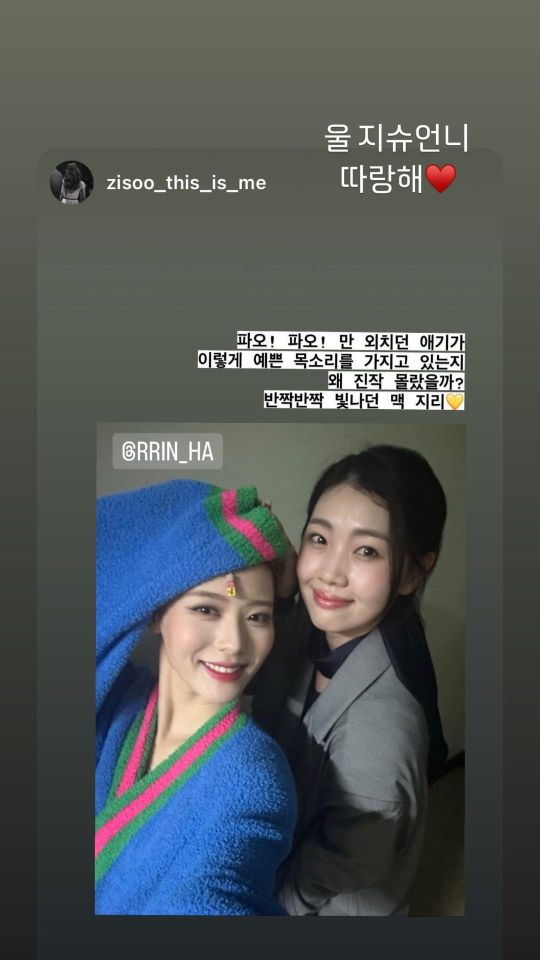
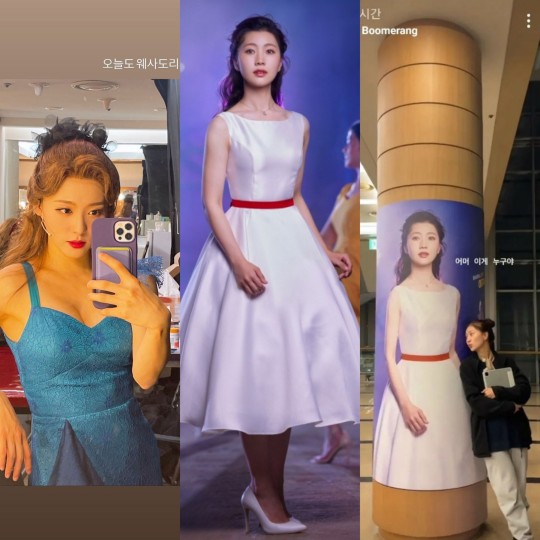
이지수 was Maria and 조하린 was an ensemble member.
++ 조승우[Cho/Jo Seung-woo] & 이지수(In the musical Sweeney Todd, they were a father-daughter relationship).



She said she originally liked the opening part the most in the POTO, but from today, she 💛 the ending the most after she saw his performance.
#the phantom of the opera#poto korea#오페라의 유령#손지수#이지수#조하린#조승우#les mierables#west side story#sweeny todd#poto seoul#poto 3rd korea#오페라의 유령 삼연#wedding dress#les mis korea
21 notes
·
View notes
Text






Katherine Plumber around the world
Off-Broadway - New Jersey - Kara Lindsay
Broadway - New York - Kara Lindsay
Touring - North America - Morgan Keene
Milan, Italy - Giulia Fabbri
Seoul, Korea - Choi Su Jin
West End - London - Bronté Barbé
#an appreciation post#I just think they’re neat#and I’ve seen two of them live! :D#newsies#Katherine plumber#newsies broadway#newsies tour#newsies papermill#newsies Italy#newsies korea#newsies London#west endsies#kara lindsay#bronté barbé#Morgan keene#choi su jin#giulia fabbri#lmk if you want me to do this for any other character!!
43 notes
·
View notes
Note
which six wigs from current productions are most different from each other for each role?
This depends on so many things. The wigs have to follow a certain style for each character and how different they can be from each other varies a lot between characters. Lenght, volume, styling, cut, color, hairtype, how much standarization there is. All affect the final look
I think it is:
Aragon: Aragon tour. This one is weird because both UK companies have very different styles for the principal and alternate, but all other alts and swings have almost identical styles. Broadway and Boleyn tour change lenght, volume and hairtype but styling is overall the same. Aragon tour has simmilar curl type for Kahlia, Kelly and Kelsee but a very distinct styling for each one plus marilyn who does have a simmilar styling to Kelsee but completely different hair type.

Boleyn: Broadway. Leandra makes them win this one on her own, but also Ayla has a different cut than Aubrey and Marilyn (and obviously a different hair type too).

Seymour: Aragon tour. For ANAT all three of them have different lenght, style and curls; both before and after Kelly and Kelsee got new wigs (and thats not even counting kelsee's ginger wig). I feel like WE and UKT should be in here too because both have very distinct styles for principal and alt and have at least one other alternate that should have a customized style (that hasn't debuted yet), but everyone else has the same just like for Aragon.

Cleves: Everyone (minus SK but I added them to the chart anyway). Cleves is the character that gets the most customization by far, and even when the base style is technically the same all read very different onstage. Even when NCS tries to give the alts a style that looks the same as the principal it ends up looking different.

Howard: broadway and only because of a technicality. Holli's wig is made to look like curly hair straightened while everyone else is just straight hair. Also I am not counting dye color in here because that is chosen to compliment the base haircolor so it is not an intentional difference. (And zoomed out photos because they all have different lenghts too)

Parr: All land companies. Parr does have four different base styles: side curly ponytail, side curls, regular ponytail and updo. But within those happens the same that happens with Cleves, even when the base is the same it looks different on everyone. WE has Roxanne in the ponytail, Leah in side curls, Monique in side curly ponytail and everyone else in different updos. UKT has a simmilar mix of side ponytail for Alana, side curls for Natalie and different updos for everyone else. Boleyn tour has two different side ponytails and two different regular ponytails. Aragon tour has Gabi's style and three different ponytails. Broadway has Taylors side swept curls, two very distinct side curly ponytails and one regular ponytail.

#ask#six the musical#six wigs#six broadway#six west end#six aragon tour#six boleyn tour#six uk tour#six cruise#six south korea#식스 한국
38 notes
·
View notes
